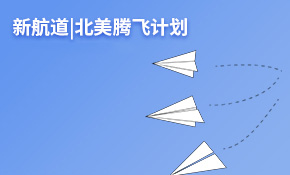托福阅读真题:Stone Tools and Pottery Fragments
托福阅读真题:Stone Tools and Pottery Fragments
Stone Tools and Pottery Fragments
Paragraph 1:Aside from ancient buildings, in sheer bulk the largest part of the archaeological record is made up of stone tools and pottery fragments (shards). Stone tools are the earliest known artifacts, having been first used more than two million years ago, and they have remained in use to the present day. When a chunk of fine-grain stone is struck with sufficient force at the proper angle with another rock or with a wood or bone baton, a shock wave will pass through the stone and detach a flake of the desired size and shape. In analyzing ancient stone tools, many archaeologists have mastered the skills needed to make stone tools themselves. Few things are sharper than a fragment struck from fine-grain flint or from obsidian (volcanic glass). Obsidian is so fine grained that flakes of it can have edges only about twenty molecules thick — hundreds of times thinner than steel tools.
1. The word “detach” in the passage is closest in meaning to
O separate
O sharpen
O loosen
O produce
2. According to paragraph 1, each of the following is true of stone tools EXCEPT
O They were first produced more than two million years ago.
O They are still being used today.
O They are made of fine-grained stones such as flint or obsidian.
O Their edges are never as thin or as sharp as those of steel tools.
Paragraph 2:Through experimentation, some archaeologists are able to produce copies of almost every stone tool type used in antiquity. A common research strategy is to make flint tools, use them to cut up meat, saw wood, clean hides, bore holes, etc, and then compare the resulting wear traces with the marks found on ancient artifacts. Sometimes electron-scanning microscopes are used to study minute variations in these use marks. Some rough correspondence can be found between the types of uses and the characteristics of wear marks, but there are many ambiguities.
3. The word “minute” in the passage is closest in meaning to
O unusual
O important
O hidden
O tiny
4. The word “ambiguities” in the passage describes things that
O do not make any sense
O are not well documented
O can be interpreted in more than one way
O do not fit with the available data
5. According to paragraph 2, archaeologists make and use their own stone tools in order to
O find out how strong different types of stone tools are
O find out what kinds of tasks such tools were used for in ancient times
O study the copies under electron microscopes and to avoid damaging the originals
O show that ancient multipurpose tools were practical and easy to use
Paragraph 3:Ethnographic data from people who still use these tools, like one study of how the IKung hunter-gatherers use different styles of stone spear points to identify their different social groupings, indicate that even crude-looking stone tools may reflect a great deal of the social and economic structure.
6. Which of the following questions about the IKung is answered in paragraph 3?
O Are the IKung rare among today’s hunter-gatherers in using stone tools?
O Is the social structure of the IKung more complex than that of most hunter-gatherer societies?
O Does the IKung’s use of several styles of stone tools have a social function?
O Do the IKung use stone tools other than spear points?
Paragraph 4:Ceramics were in use much later than the first stone tools (appearing in quantity in many places about 10,000 years ago), but they were used in such massive quantities in antiquity that, for many archaeologists, work life consists mainly of the slow sorting and analyzing of pottery fragments. Ceramic pots were first made by hand and dried in the sun or in low temperature kilns, a process that did not produce a very durable material. But in many areas of Africa, Asia and Europe high-temperature kilns produced pottery that is nearly a form of glass, and fragments of these pots survive even when the pottery is broken.
7. According to paragraph 4, which of the following is true of the earliest ceramics?
O They were in use before the earliest stone tools.
O They were used in only a few places 10,000 years ago.
O They appeared in many places about 10,000 years ago.
O They were all baked in low-temperature kilns.
8. Paragraph 4 suggests sun-dried pots
O interest archaeologists less than stone tools because they are not as old.
O account for comparatively few of the pottery fragments that archaeologists study.
O are more common in Africa, Asia, or Europe than other parts of the world.
O are easier to sort and analyze than pottery made in high-temperature kilns.
Paragraph 5:Ceramics form such a large part of archaeologists’ lives because ceramics express so much about the people who made them. Pots are direct indicators of function in that they show how diets and economies changed over time. Archaeologists have documented how pottery in the American Southwest changed in prehistoric times as a diet developed that included boiled seeds of various native plants, and pottery was developed to withstand the heat and mechanical stresses of the boiling process.
9. In paragraph 5, the author discusses pottery in the American Southwest in order to
O emphasize that ceramics are usually the only means of reconstructing the diet and economic activity of prehistoric peoples.
O argue that changes in the style of pottery are usually a result of changes in food preparation.
O explain why certain types of prehistoric pottery have been able to survive better than others.
O support the claim that ceramics provide important dining and economical information about their users.
Paragraph 6:Ceramics are almost always analyzed on the basis of their style. This idea of style is hard to define, but changing styles are the basis on which archaeologists date much of the archaeological record. But for many archaeologists, ceramic styles are more than just convenient devices of dating. For many archaeologists, stylistic decoration of artifacts is the primary means by which one can enter the cognitive world of the ancients. Societies throughout history have invested their objects with styles that have profound and complex meanings and effects. In the case of the Maya and every other early civilization, rulers used particular symbols and styles as mechanisms through which they portrayed, communicated, and implemented their power. In all societies, styles fix social meaning and are powerful ways in which social groups define and construct their culture. Styles of objects, language, and personal behavior identify people in terms of gender, age group, ethnic group, socioeconomic class, and in many other important ways. Some researchers, for example, have argued that a particular kind of pottery, called Ramey incised (which is incised with figures of eyes, fish, arrows, and abstract objects and was used by the people in the area of present-day Missouri and Illinois at about A.D 900), was primarily used to distribute food but was also used to communicate the idea that the society’s elite, for whom the pots were made, were mediators of cosmic forces.
10. The word “portrayed”, in the passage is closest in meaning to
O claimed
O represented
O defended
O established
11. According to paragraph 6, decorating artifacts in particular styles served each of the following functions in ancient societies EXCEPT
O to maintain the power of the societies’ rulers
O to mark socially relevant distinctions between groups
O to establish the superiority of a society’s artistic values
O to define important aspects of the society’s culture
12. Which of the sentences below best expresses the essential information in the highlighted sentence in the passage? Incorrect choices change the meaning in important ways or leave out essential information.
O Some researchers argue that pottery of the Ramey Incises style was used not only to distribute food but also to communicate that the society’s elite were mediators of cosmic forces.
O Some researchers argue that the figures of eyes, fish, arrows and abstract objects were incised on Ramey Incised pottery to communicate that those who provided the pots were members of the elite.
O Some researchers argue that the primary function of Ramey Incised pottery was food distribution rather than a way of communicating the status of the society’s elite.
O Some researchers argue that, based on the kinds of symbols incised on pottery, that pottery was sometimes used to mediate cosmic forces.
Paragraph 6:Ceramics are almost always analyzed on the basis of their style. This idea of style is hard to define, but changing styles are the basis on which archaeologists date much of the archaeological record. But for many archaeologists, ceramic styles are more than just convenient devices of dating. For many archaeologists, stylistic decoration of artifacts is the primary means by which one can enter the cognitive world of the ancients. Societies throughout history have invested their objects with styles that have profound and complex meanings and effects. ■In the case of the Maya and every other early civilization, rulers used particular symbols and styles as mechanisms through which they portrayed, communicated, and implemented their power. ■In all societies, styles fix social meaning and are powerful ways in which social groups define and construct their culture. ■Styles of objects, language, and personal behavior identity people in terms of gender, age group, ethnic group, socioeconomic class, and in many other important ways. ■Some researchers, for example, have argued that a particular kind of pottery, called Ramey incised (which is incised with figures of eyes, fish, arrows, and abstract objects and was used by the people in the area of present-day Missouri and Illinois at about A.D 900), was primarily used to distribute food but was also used to communicate the idea that the society’s elite, for whom the pots were made, were mediators of cosmic forces.
13. Look at the four squares [??] that indicates where the following sentence could be added to the passage.
Maya rulers, for example, used symbols on their war banners to communicate that they had great power because of the support of patron gods.
Where would the sentence best fit?
14. Direction: An introductory sentence for a brief summary of the passage is provided below. Complete the summary by selecting the THREE answer choices that express the important ideas in the passage. Some sentences do not belong in the summary because they express ideas that are not presented in the passage or are minor ideas in the passage. This question is worth 2 points.
Stone tools and pottery fragments are two of the most common kinds of archaeological finds.
Answer Choices
O Stone tools are the oldest known artifacts, predating the development of ceramics by about two million years.
O The styles of stone tools produced by prehistoric peoples are more reliable indicators of their society’s social and economic structure than the styles of their ceramics.
O Some researchers believe that the figures and symbols found on pottery may have multiple meanings, but this has not yet been fully established.
O Archaeologists know how stone tools were made and can produce copies themselves, but it is often difficult to determine how any particular ancient tool was used.
O The earliest evidence of ceramic production comes from Africa, Asia, and Europe, where the development of specialized technologies made pots nearly indestructible.
O Because pottery had both practical and symbolic uses, it can tell researchers a lot about the diet, economy, and social structure of ancient societies.
答案:
ADDCB CCBDB CAB ADF
分享:新航道托福培训















